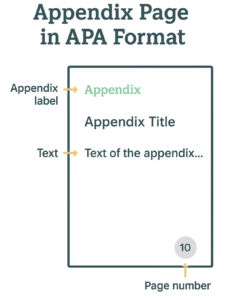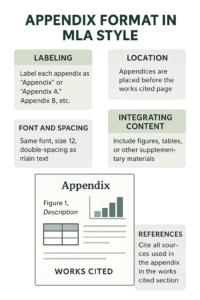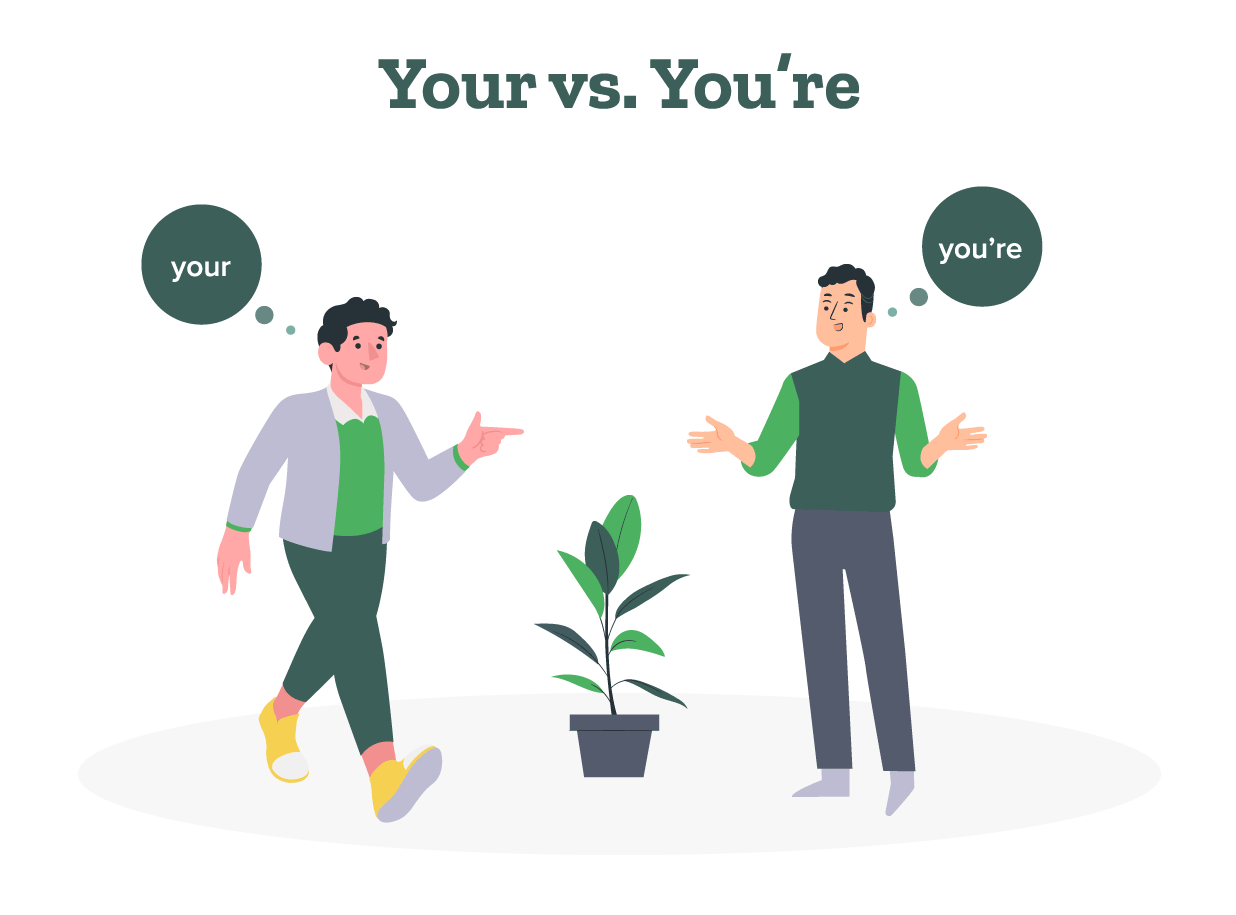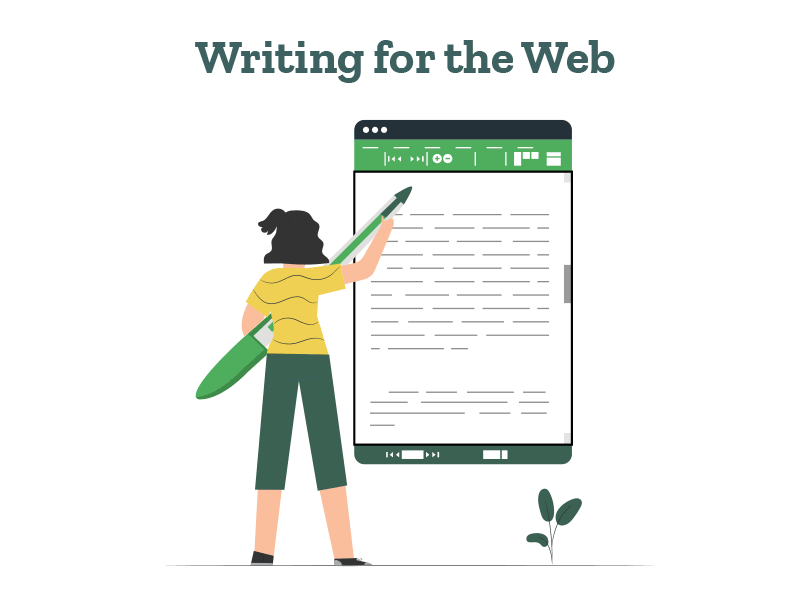- Tips to Self-Edit Your Dissertation
- Guide to Essay Editing: Methods, Tips, & Examples
- Journal Article Proofreading: Process, Cost, & Checklist
- The A–Z of Dissertation Editing: Standard Rates & Involved Steps
- Research Paper Editing | Guide to a Perfect Research Paper
- Dissertation Proofreading | Definition & Standard Rates
- Thesis Proofreading | Definition, Importance & Standard Pricing
- Research Paper Proofreading | Definition & Standard Rates
- Essay Proofreading | Options, Cost & Checklist
- Top 10 Paper Editing Services of 2024 (Costs & Features)
- Top 10 Essay Checkers in 2024 (Free & Paid)
- Top 10 English Correctors to Perfect Your Text in 2024
- 10 Advanced AI Text Editors to Transform Writing in 2024
- Personal Statement Editing Services: Craft a Winning Essay
- College Essay Review: A Step-by-Step Guide (With Examples)
- Top 10 College Essay Review Services: Pricing and Benefits
- How to Edit a College Admission Essay (8-Step Guide)
- Improve Academic Writing: Types, Tips, Examples, Services
- How to Use AI to Write Research Papers: A Step-by-Step Guide
- How to Write an Assignment: A Step-by-Step Guide for Students
- AI Proofreading Services: Meaning, Benefits & Best Tools
- 10 Best Proofreading Services Online for All in 2025
- Top 10 Recommendation Letter Editing Services | Best Picks
- How to Format an Appendix: APA and MLA
- Top 10 Online Thesis Editing and Proofreading Services
- What is Academic Editing? Meaning, Types & Importance
- Top 10 AI Proofreaders to Perfect Your Writing in 2025
- What Is a Thesis: How to Write a Thesis with Examples
- Top 10 Academic Proofreading Services (2025 Update)
- Research Paper Outline: Free Templates & Examples to Guide You
- How to Write a Research Paper: A Step-by-Step Guide
- How to Write a Lab Report: Examples from Academic Editors
- Research Methodology Guide: Writing Tips, Types, & Examples
- The 10 Best Essential Resources for Academic Research
- 100+ Useful ChatGPT Prompts for Thesis Writing in 2024
- Best ChatGPT Prompts for Academic Writing (100+ Prompts!)
- Sampling Methods Guide: Types, Strategies, and Examples
- Independent vs. Dependent Variables | Meaning & Examples
- Understanding Verbatim Plagiarism: Copy, Paste, Regret
- What Is a Journal Article and How to Write a Journal Article
- How to Use AI to Write Research Papers: A Step-by-Step Guide
- Top 10 AI Tools for Research in 2025 (Fast & Efficient!)
- What Is a Research Proposal: A Detailed Guide
- How to Format an Appendix: APA and MLA
- What Is an Appendix In a Paper?
- Types of Journals in Research and Their Features
- Difference Between Paper Editing and Peer Review
- How to Handle Journal Rejection: Essential Tips
- Editing and Proofreading Academic Papers: A Short Guide
- How to Carry Out Secondary Research
- The Results Section of a Dissertation
- Final Checklist: Is My Article Ready for Submitting to Journals?
- Types of Research Articles to Boost Your Research Profile
- How does LaTeX based proofreading work?
- How to Improve Your Scientific Writing: A Short Guide
- Chicago Title, Cover Page & Body | Paper Format Guidelines
- How to Write a Thesis Statement: Examples & Tips
- Chicago Style Citation: Quick Guide & Examples
- Research Paper Outline: Free Templates & Examples to Guide You
- The A-Z Of Publishing Your Article in A Journal
- What is Journal Article Editing? 3 Reasons You Need It
- How to Cite a Book in APA Style | Format & Examples
- How to Start a Research Paper | Step-by-step Guide
- APA Citations Made Easy with Our Concise Guide for 2024
- A Step-by-Step Guide to APA Formatting Style (7th Edition)
- Academic Writing in 2024: 5 Key Dos & Don’ts + Examples
- How to Write a Lab Report: Examples from Academic Editors
- What Are the Standard Book Sizes for Publishing Your Book?
- MLA Works Cited Page: Quick Tips & Examples
- 2024’s Top 10 Thesis Statement Generators (Free Included!)
- Top 10 Title Page Generators for Students in 2024
- What Is an Open Access Journal? 10 Myths Busted!
- Primary vs. Secondary Sources: Definition, Types & Examples
- How To Write a College Admissions Essay That Stands Out
- APA Journal Citation: 7 Types, In-Text Rules, & Examples
- What Is Predatory Publishing and How to Avoid It!
- Independent vs. Dependent Variables | Meaning & Examples
- How to Write a Strong Dissertation & Thesis Introduction
- How to Cite a Book in MLA Format (9th Edition)
- How to Cite a Website in MLA Format | 9th Edition Rules
- 10 Best AI Conclusion Generators (Features & Pricing)
- Top 10 Academic Editing Services of 2024 [with Pricing]
- How to Create the Perfect Thesis Title Page in 2024
- What Is Accidental Plagiarism & 9 Prevention Strategies
- What Is Self-Plagiarism? (+ 7 Prevention Strategies!)
- Understanding Verbatim Plagiarism: Copy, Paste, Regret
- Improve Academic Writing: Types, Tips, Examples, Services
- What Is a Journal Article and How to Write a Journal Article
- What Is Paraphrasing Plagiarism and How to Avoid It
- What Is Expository Writing? Types, Examples, & 10 Tips
- Academic Research Ethics & Rules Simplified for All
- Complete Guide to MLA 9th Format
- Top 10 Online Dissertation Editing Services of 2025
- How to Write a Dissertation & Thesis Conclusion (+ Examples)
- What Is a Peer Review & 8 Types of Peer Review Processes
- 50 Best Essay Prompts for College Students in 2025
- What Is an Annotated Bibliography & Writing One Using AI
- What Is an Appendix In a Paper?
- Types of Journals in Research and Their Features
- 5 Effective Personal Statement Examples & Templates
- 100+ Writing Prompts for College Students (10+ Categories!)
- What Is a Thesis: How to Write a Thesis with Examples
- What Is Plagiarism? Meaning, Types & Examples
- Preventing Plagiarism in Your Thesis: Tips & Best Practices
- Final Submission Checklist | Dissertation & Thesis
- 7 Useful MS Word Formatting Tips for Dissertation Writing
- How to Write a MEAL Paragraph: Writing Plan Explained in Detail
- How does LaTeX based proofreading work?
- Em Dash vs. En Dash vs. Hyphen: When to Use Which
- 2024’s Top 10 Self-Help Books for Better Living
- Top 10 Paper Editing Services of 2024 (Costs & Features)
- 100+ Useful ChatGPT Prompts for Thesis Writing in 2024
- Best ChatGPT Prompts for Academic Writing (100+ Prompts!)
- MLA Works Cited Page: Quick Tips & Examples
- 2024’s Top 10 Thesis Statement Generators (Free Included!)
- Top 10 Title Page Generators for Students in 2024
- 10 Advanced AI Text Editors to Transform Writing in 2024
- Top 10 Academic Editing Services of 2024 [with Pricing]
- Know Everything About How to Make an Audiobook
- How to Create the Perfect Thesis Title Page in 2024
- Mastering Metaphors: Definition, Types, and Examples
- 10 Best Paid & Free Citation Generators (Features & Costs)
- The 10 Best Free Character and Word Counters of 2025
- What Is an Annotated Bibliography & Writing One Using AI
- Top 10 AI Proofreaders to Perfect Your Writing in 2025
- What Is Plagiarism? Meaning, Types & Examples
- Top 10 Academic Proofreading Services (2025 Update)
- Citing References: APA, MLA, and Chicago
- How to Cite Sources in the MLA Format
- MLA Citation Examples: Cite Essays, Websites, Movies & More
- Chicago Title, Cover Page & Body | Paper Format Guidelines
- Chicago Style Citation: Quick Guide & Examples
- Citations and References: What Are They and Why They Matter
- APA Headings & Subheadings | Formatting Guidelines & Examples
- Formatting an APA Reference Page | Template & Examples
- How to Create an MLA Title Page | Format, Steps, & Examples
- How to Create an MLA Header | Format Guidelines & Examples
- MLA Annotated Bibliography | Guidelines and Examples
- APA Website Citation (7th Edition) Guide | Format & Examples
- APA Citations Made Easy with Our Concise Guide for 2024
- APA Citation Examples: The Bible, TED Talk, PPT & More
- APA Header Format: 5 Steps & Running Head Examples
- A Step-by-Step Guide to APA Formatting Style (7th Edition)
- How to Write an Abstract in MLA Format: Tips & Examples
- APA Journal Citation: 7 Types, In-Text Rules, & Examples
- 10 Best Free Plagiarism Checkers | Accurate & Reliable Tools
- How to Cite a Book in MLA Format (9th Edition)
- How to Cite a Website in MLA Format | 9th Edition Rules
- 10 Best Paid & Free Citation Generators (Features & Costs)
- Complete Guide to MLA 9th Format
- Research Paper Format: APA, MLA, & Chicago Style
- 5 Reasons Why It Is Important To Cite Your Sources
- APA Title Page Format Simplified | Examples + Free Template
- Writing a Dissertation Proposal
- The Acknowledgments Section of a Dissertation
- The Table of Contents Page of a Dissertation
- The Introduction Chapter of a Dissertation
- Tips to Self-Edit Your Dissertation
- The Results Section of a Dissertation
- Preventing Plagiarism in Your Thesis: Tips & Best Practices
- Final Submission Checklist | Dissertation & Thesis
- The Only Dissertation Toolkit You’ll Ever Need!
- 7 Useful MS Word Formatting Tips for Dissertation Writing
- 5 Thesis Writing Tips for Master Procrastinators
- The 5 Things to Look for in a Dissertation Editing Service
- Top 10 Dissertation Editing & Proofreading Services
- Why is it important to add references to your thesis?
- Thesis Editing | Definition, Scope & Standard Rates
- Expert Formatting Tips on MS Word for Dissertations
- A 7-Step Guide on How to Choose a Dissertation Topic
- 350 Best Dissertation Topic Ideas for All Streams in 2024
- A Guide on How to Write an Abstract for a Research Paper
- Dissertation Defense: What to Expect and How to Prepare
- Creating a Dissertation Title Page (Examples & Templates)
- Top 10 Online Dissertation Editing Services of 2025
- A Beginner’s Guide to How to Write a Dissertation in 2025
- What Is a Research Proposal: A Detailed Guide
- How to Write a Dissertation Literature Review: Tips and Structure
- What Is a Thesis: How to Write a Thesis with Examples
- Essential Research Tips for Essay Writing
- How to Write a MEAL Paragraph: Writing Plan Explained in Detail
- How to Write a Thesis Statement: Examples & Tips
- What Is a Mind Map? Free Mind Map Templates & Examples
- How to Write an Essay Outline: Free Template & Examples
- How to Write an Essay Header: MLA and APA Essay Headers
- How to Write an Essay: 8 Simple Steps with Examples
- Expository Essay: Structure, Tips, and Examples
- Guide to Essay Editing: Methods, Tips, & Examples
- Narrative Essays: Structure, Tips, and Examples
- How to Write an Argumentative Essay (Examples Included)
- How to Write a Conclusion for an Essay (Examples Included!)
- How to Write an Impactful Personal Statement (Examples Included)
- Literary Analysis Essay: 5 Steps to a Perfect Assignment
- How to Write a Compare and Contrast Essay: Tips & Examples
- Top 10 Essay Checkers in 2024 (Free & Paid)
- 100 Best College Essay Topics & How to Pick the Perfect One!
- College Essay Format: Tips, Examples, and Free Template
- 10 Best AI Essay Outline Generators of 2024
- Personal Statement Editing Services: Craft a Winning Essay
- College Essay Review: A Step-by-Step Guide (With Examples)
- Top 10 College Essay Review Services: Pricing and Benefits
- How to Write an Assignment: A Step-by-Step Guide for Students
- The Four Main Types of Essay | Quick Summary with Examples
- How to Write an Essay Introduction | 4 Examples & Steps
- Top 10 Free Essay Writing Tools for Students in 2025
- 10 Best AI Essay Writing Tools in 2025
- What Is an Essay? A Comprehensive Guide to Structure and Types
- How to Write a Descriptive Essay | Examples and Structure
- Structure of an Essay: 5 Tips to Write an Outstanding Essay
- Types of Introductions and Examples
- Top 10 Essay Editing Services of 2025
- The Best Essay Graders of 2025 That You Can Use for Free!
Still have questions? Leave a comment

Checklist: Dissertation Proposal
Enter your email id to get the downloadable right in your inbox!
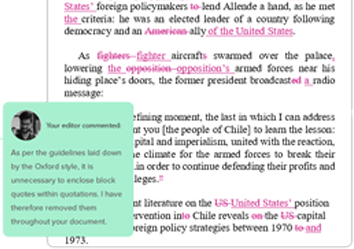
Examples: Edited Papers
Enter your email id to get the downloadable right in your inbox!
Need
Editing and
Proofreading Services?

How to Format an Appendix: APA and MLA
 May 19, 2025
May 19, 2025 5
min read
5
min read
- Tags: Academic Publishing, Academic Research, Academic Writing, APA Style, Formatting Guidelines, MLA Style
Formatting an appendix might not be the most exciting part of writing, but it plays a crucial role in academic and professional documents. Appendices, as the name indicates, offer space to include supplementary materials.
These could include tables, charts, or detailed data. While they do not form part of the main content, they enhance your content without overcrowding it. Hence, proper appendix formatting is necessary. It ensures clarity, accessibility, and a professional presentation of your work.
This guide provides comprehensive instructions on how to format an appendix, covering key guidelines, styles like APA and MLA, and common pitfalls to avoid.
Are Appendices In Your Research Stressing You Out? Let Us Help. Learn More
Importance of proper appendix formatting in academic and professional writing
An appendix is a versatile tool in academic and professional writing, often used to provide additional context, background, or supporting information. However, its value is lost if it is poorly formatted. Proper appendix formatting ensures that:
- Readers can quickly locate supplementary material.
- The document maintains a professional and polished appearance.
- The appendix aligns with specific formatting styles like APA or MLA, often required in academic settings.
When formatting an appendix, the focus should be on clarity, organization, and consistency. A well-structured appendix strengthens your work by making it more comprehensive and easier to understand than documents written without appendices.
Proper appendix formatting also ensures the reader can easily locate and reference the necessary information. And that is exactly what you must focus on to ensure your audience does not skip reading your research!
General guidelines for formatting an appendix
Although specific requirements might vary depending on style guides, some general appendix guidelines apply universally.
Here are some rules you could consider following for effective formatting:
- Label clearly: Use titles like “Appendix A”, “Appendix B”, and so on for multiple appendices. Ensure these labels correspond to references in the main text.
- Organize logically: Present materials in the same order in which they have been mentioned in the main text. This helps your readers follow your argument without disruptions in reading and interpreting.
- Use consistent formatting: Maintain uniformity in font style, size, and spacing across the appendix and the main document.
- Separate each appendix: Start each new appendix on a fresh page for better organization.
- Provide descriptions: For tables, charts, and other elements, include concise descriptions or titles to clarify their purpose.
Appendix format in APA style
Formatting an appendix may vary depending on the style guide you have decided to follow, such as APA, MLA, or Chicago style. Let us examine some of the common formatting requirements for each, starting with APA.
The APA appendix format requires adherence to specific guidelines that ensure clarity and standardization. Here’s how to format an appendix in APA:
- Labeling: Per this style, label each appendix with a title such as “Appendix A,” “Appendix B,” etc., at the top of the page. Use the title “Appendix” for just one set of information, but “Appendix A, B, C” for multiple appendices. Center the title on the page. Each appendix should begin on a new page.
- Order: Appendices appear after the references section in an APA paper.
- Font and spacing: Use the same font and double-spacing as the rest of the document. Standard fonts give the best results here.
- Content placement: Include supplementary materials like raw data, survey forms, or large tables that might distract from the main text.
- Headings: If the appendix contains subsections, format these with APA’s heading styles for clarity.
- Titles: Use a clear title that describes the appendix contents (e.g., “Appendix A: Survey Results”).
By following these guidelines, you ensure that the appendix adheres to APA standards, enhancing your paper’s credibility.
Appendix format in MLA style
Formatting an appendix in MLA style also involves a structured approach. Below are the MLA appendix format requirements:
- Labeling: When using this style, label each appendix as “Appendix” if there’s only one. Use “Appendix” followed by a letter if there are multiple appendices (e.g., Appendix A, Appendix B, etc.). The title should be centered.
- Location: Appendices are typically placed before the works cited page in MLA.
- Font and spacing: The same font and spacing rules as the main document apply—usually a readable font like Times New Roman, size 12, and double-spacing. While keeping the same formatting as the rest of the document is recommended, appendices should be clearly labeled.
- Integrating content: Include figures, tables, or other supplementary materials with appropriate titles and descriptions.
- References: Cite all sources used in the appendix in the works cited section, ensuring consistency with MLA guidelines.
For those new to MLA formatting, reviewing a detailed MLA format example can be an invaluable starting point.
Another well-known style is the Chicago style appendix. In this, do the following:
- Similar to APA, use a clear heading for each appendix.
- Place appendices after the main text and before the bibliography.
- Each appendix should begin on a new page, with a label like “Appendix A: Detailed Data.”
In each style, the main idea is to provide clear labels and ensure that readers can easily find each appendix. Be sure to refer to the latest guidelines for each style, as these recommendations may periodically be updated.
Formatting tables, figures, and other items in an appendix
When your appendix includes tables, figures, or other supplementary items, it is crucial to present them professionally:
- Provide titles and descriptions: Each table or figure should have a clear title and a brief description explaining its relevance.
- Example: Table A1. Survey Results on Consumer Preferences
- Number sequentially: Number all tables and figures to avoid confusion, especially when referencing them in the main text.
- Maintain consistent style: Use the same formatting style for all items within the appendix. For instance, align all tables and use consistent font sizes.
- Use separate pages if necessary: For large tables or figures, dedicate a full page to ensure readability.
- Cite sources: If data or figures are sourced externally, provide appropriate citations to maintain academic integrity.
Proper formatting of visual and supplementary content ensures that readers can easily interpret your findings or supporting materials.
Tips for ensuring clarity in your appendix
An appendix should be clear, concise, and easy to navigate. Wouldn’t you agree? This is because you want your readers to focus on your research and not be hassled by where to find the relevant information that corresponds to your findings and observations.
So, here are some tips to enhance clarity:
- Use numbering: For multiple appendices, label them as Appendix A, Appendix B, and so on, and reference them accordingly in the main text.
- Headings and subheadings: Use headings or subheadings for better organization, especially if the appendix contains diverse materials.
- Align references: Ensure all references in the main text point to the correct appendix items. Misalignment can confuse readers and reduce the effectiveness of your research work or academic papers.
- Avoid overcrowding: Presenting data or charts succinctly can be a challenge in many cases. However, it is important to offer clarity and ease of access to your readers. If there is too much content, consider breaking it into multiple appendices.
- Review for accuracy: Double-check all information in the appendix, including labels, titles, and citations, for correctness and consistency.
By following these steps, you can create an appendix that complements your work and enhances the reader’s experience.
Mistakes to avoid when formatting an appendix
Despite its importance, formatting an appendix can often lead to errors in your work. So, instead of impressing your audience with insights and useful information, you might end up confusing or annoying them.
To avoid such a scenario, watch out for common mistakes that might occur during formatting. Here’s a quick list:
- Incorrect labeling: Failing to label appendices or using inconsistent labels can frustrate readers. Always double-check appendix references in the main text.
- Missing titles for figures and tables: Each figure, chart, or table must have a clear and descriptive title. Without it, readers may struggle to understand the purpose of the content.
- Improper margins or spacing: Adhering to standard margins and spacing is critical for maintaining a professional appearance. Avoid cramped or misaligned layouts.
- Overloading the appendix: Including excessive or irrelevant material can detract from the main document. Be selective and include only that which is necessary.
- Lack of citations: If your appendix includes borrowed data or images, ensure all sources are properly cited to avoid plagiarism.
When you eliminate such mistakes and inconsistencies, your work becomes appealing. Your appendix will look professional and sound well-thought-out.
Learning how to format an appendix is a vital skill for academic and professional writers. Whichever style you need to follow—APA appendix format, MLA appendix format, or general appendix guidelines—consistency and clarity are key. A well-formatted appendix makes your document credible and user-friendly for readers.
Whether you are creating an appendix in a book example or a detailed academic report, the principles of good formatting remain the same: clear organization, proper labeling, and adherence to style-specific rules.
We are sure that with these guidelines, tips, and examples, you are now equipped to create appendices that look as polished and professional as the main content. However, if you need professional assistance with appendix formatting, get PaperTrue’s editing and proofreading services.
Here are some other articles you might want to check out:
Frequently Asked Questions

